Content Sections
Article update: 19/06/17
Are we charging down the wrong path?
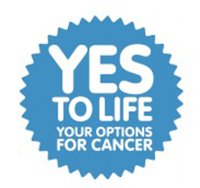
That was the title of last Saturday's Yes to Life Annual Conference, held at Woburn House Conference Centre in London. Opening the proceedings, founder Robin Daly posed the question, “Is cancer a metabolic, epigenetic disease?” Answering this question were a group of experts and a dynamic audience comprised largely of practitioners and individuals with varying degree of cancer, as well as those who had fully recovered. The short answer to Robin's question, that was repeated in many different ways, was "Yes". The longer answer involved detailed explanations that explored the fields of molecular biology, genetics, epigenetics, cell biology, nutrition, lifestyle medicine, cosmology, clinical practice - and above all, clinical experience. Ramming the point home were patients who had become fully engaged in their own cancers, and worked very closely with their doctors and other healthcare providers, and defeated all odds by surviving cancer that was labelled earlier as 'terminal' using integrated approaches .
"Cancer prevention is not a sexy topic that gets you the Nobel prize"
Paul Davies, Principal Investigator in the Center for the Convergence of Physical Science and Cancer Biology at Arizona State University was first to contribute. He did this by video given he couldn't make it in person. He explained that cancer is an incredibly political disease with vested interest from research companies, pharmaceutical companies and hospitals. The staggering sums of money that are involved means that many are focused on the cash. The search for the next miracle drug continues.
But, given that we know that the environment is seminally important in nearly all cancers, why aren't we looking here for solutions. Diet and lifestyle choices represent those elements of our environment over which we can exercise greatest control and we know the risk of many cancers is greatly affected by what we eat, how we eat - as well as our behaviour and emotional state. In the search for cures, we don’t ask ‘Why does cancer exist?’. Cancer seems to be triggered by some sort of insult, and is not just confined to humans, which suggests cancer has deep evolutionary roots.
Earth has, for the majority of its existence, been populated by single celled organisms, but once it became ‘polluted’ by oxygen, multi-celled organisms began to evolve. This was made possible as cells emerged containing mitochondria (energy-producing organelles within cells), which are derived from ancient bacteria, to power the cell using this oxygen. The cells of the multi-cellular organism are programmed to die, which is different to that of single cells which just want to keep replicating. Cancer involves a breakdown of this ‘death’ process. Malignant cells, behave as primitive, single-celled organisms forming tumours as they overpopulate. Research has shown us that cancer cells thrive in low oxygen conditions reverting to fermentation to process this proliferation with sugar providing the fuel.
This tells us that turning up oxygen and turning down sugar can help control cancer. But Paul Davies acknowledged that nobody will pay for expensive clinical trials on this therapy as there are no big bucks at the end of it.
Developing the Warburg Effect
Next at the podium was Travis Christofferson, fresh over the USA, founder and president of Single Cause Single Cure and author of the bestselling book “Tripping Over the Truth.”
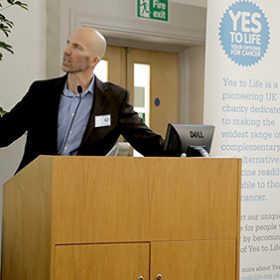
Otto Warburg, back in 1925, hypothesised that the prime cause of cancer is the replacement of the respiration of oxygen in normal body cells by a fermentation of sugar. But this theory faded and gave way to other theories, with consensus settling over the last half century on the somatic mutation theory of cancer. Somatic mutation theory was born out of seeing cancer as a mutation of a single cell, which then sets off a cascade of genetic and epigenetic (gene expression) changes that triggers full-bore proliferation and metastases. The Cancer Genome Atlas (TCGA) at the National Institutes of Health in the USA was born to map each single gene imprint involved in key cancers and it was hoped this would reveal patterns that could be exploited for targeted, chemotherapy. No such luck. No pattern of commonly mutated genes has been found between one person and the next in the same cancers. In fact, the profile of the gene could vary from cell to cell in the same cancer.
Ninety years ago, one of the most eminent scientists of the 20th Century, German scientist and Einstein family friend, Otto Warburg, had found that cancer cells ferment sugar to form lactic acid in the presence of oxygen, but normal cells use the more energy-efficient oxidative phosphorylation pathway (Kreb's cycle). A PET/CT scan highlights the Warburg effect, where the cancerous cells load themselves with the radioactive sugar and light up like a Christmas tree on the scan.
Age is the biggest cancer risk factor. Ageing is accelerated by higher levels of the protein, IGF-1 (Insulin-Like Growth Factor-1), and this dramatically increases cancer risk. Low IGF-1 levels are associated with living longer.
Based on the increasing acceptance that cancer is a metabolic and epigenetic disease, and not a genetic disease, Travis Christofferson presented a therapeutic strategy which involved the use of a ketogenic diet, largely replacing glucose with ketone bodies as a source of fuel.
19/06/17 - Ketogenic diets have been in press in recent months and been much maligned. In the first of two articles for Health Insight UK Travis Christofferson offers his thoughts on the myth that eating sugar doesn't feed cancer. In his second article, Travis considers how a ketogenic diet starves cancer cells and slows their growth.
The Metabolic Theory of Cancer
Rob Verkerk PhD, ANH-Intl executive and scientific director, provided a detailed overview of cancer research's troubled journey over the last 100 or so years. He used an analogy of a car accident to describe the fact that much of the research effort has focused on looking at downstream effects of metastatic cancer that was more like looking at the effects of the accident, rather than its cause or causes. The highly complex process involving the promotion of oncogenes and the silencing of tumour suppressing genes, leading to a severe disruption of cellular signaling processes and, finally, the severe disruption of cellular metabolism was where most research had been centred for the last 40 or so years, in the belief that 'miracle' anti-cancer drugs targeting oncogenes or related protein products might be discovered.
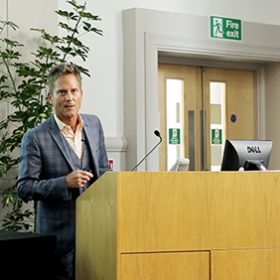
This dysregulation of genetic function in metastatic cancer cells is the consequence, as amplified by both Paul Davies and Travis Christofferson, of a reversion to a more primitive state in which cancer cells become exquisitely adept at doing what they need to do: produce sufficient energy for proliferation, create new biomass (nucleic acids, lipids, amino acids) as well as creating an acidic environment around them. They do this by secreting lactic acid, the by-product of the fermention process that is now recognised to be present in around 90% of cancer types, making the microenvironment around tumours unfriendly to normal cells.
The focal point of the disruption of metabolism are the mitochondria, that themselves have their origins as bacteria. While researchers have found that oxidative phosphorylation, the form of cellular respiration that yields most energy in normal cells, may still function, in living tumourigenic tissue, it now appears clear that most of the energy in most tumours is indeed produced by glucose fermentation, sometimes aided by glutamine, with lactate being the metabolic by-product. Changes in the enzymes acting at the mitochondrial surface facilitate this process. Complicating matters, there are many differences in metabolic rewiring that can occur between different types of cancer and even within the same cancer.
Before finishing his presentation by commenting on what therapeutic, integrated, personalised and preventative approaches might look like in the future, based on this renewed view on the origin of cancer, Rob Verkerk, like Travis Christofferson before him, concluded that the mechanisms espoused by researchers like Tom Seyfried probably best fitted the available information about cancer today.
Drug repurposing to fight cancer
Dr Mazibuko is a clinical research fellow at Kings College, London who is collaborating with The Seek Group and the Care Oncology Clinic. He spoke about drug repurposing, what it is and its relevance in the treatment of cancer patients.
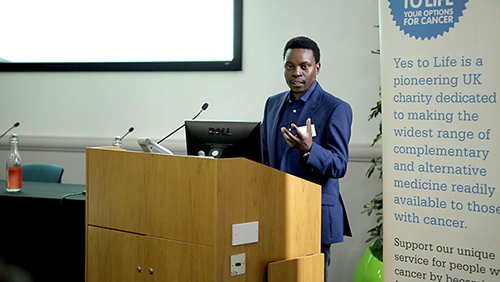
Drug repurposing is the process of developing new uses for approved and abandoned drugs. The development of new drugs is a hugely costly and time consuming process with the development of new drugs taking nine to fourteen years to go from development and testing to approval. Whilst existing research can be accessed to repurpose drugs for different health conditions from their traditional use.
Out of all the new drugs submitted only 1 in 5,000-10,000 anticancer agents get FDA approval with only 5% of new drugs moving from Phase 1 studies.
Both Metformin and statins have been repurposed for use in the treatment of certain cancers, based on plausible biochemical evidence and impacts on key metabolic pathways.
The barriers to repurposing drugs are obvious as the financial rewards are not there for the drug companies and scientists tend to get rewarded for research in novel areas.
A Ketogenic Approach
Patricia Daly has experienced cancer first hand and in doing so has experienced the benefits of adopting diet and lifestyle changes alongside mainstream treatments. Patricia was lucky as she found her cancer early and was able to benefit from these changes.

She was diagnosed with a malignant melanoma in her eye which didn’t respond to any radiotherapy. This was a large tumour and she developed another from the inside to the outside of the eye. Despite the radiotherapy treatment it appears that it was her adoption of a Ketogenic Diet (KD) that helped her body recalibrate itself and, over time, reinstate normal function. Se's been cancer free for 4 years now, the back of her eye looks good and her eyesight has returned to normal.
Patricia suggested that there needs to be better diagnosis to tell whether tumours are glucose or glutamine dependent, or both, so that diets can be adapted to best target the type of tumour. There are many types of KD and approaches differ.
A basic, classic ketogenic diet is made up of the following macronutrient ratios:
Carbs: 12-20g net carbs 3-5% (non starchy veg)
Protein: 12-20% 100-120g of food for whole day
Fat: 75-85% of total calorie intake 150g or more depending on body weight, PA and height
It is important to make sure that the right omega 3:6 ratios are used (as close to 1:1 as possible) and this is aided by taking plenty of monounsaturated fats like olive, avocado and macadamia oils, as well as healthy saturated fat like coconut oil.
There is a lot of bad press around the use of KD as ketosis and ketoacidosis are continually mixed up causing backlash from dietitians and the medical community. In ketoacidosis you also have high glucose and high ketones, but a low blood pH which creates the life threatening aspect.
Red blood cells, the medulla of the kidney and retina of the eye all depend on glucose only (this links with why diabetics have issues in these tissues).
A first hand experience
Jane Dorey McLelland is a cancer survivor. Having survived one cancer diagnosis and subsequent treatment her cancer advanced and spread. A physiotherapist by training, Jane describes herself as an ‘independent thinker’ and credits this ability to think outside the box with her survival.

Jane was first diagnosed with cervical cancer in 1994 following a series of misdiagnoses. Due to her misdiagnosis the cancer had spread to her womb and many of her lymph nodes and Jane had to undergo a hysterectomy sending her into an early menopause.
After her first battle with cancer Jane’s mother was diagnosed with breast cancer and it was during this time that Jane found Complementary Therapies. Unfortunately, Jane’s mother did not survive her cancer, but Jane’s experience during this time was to stand her in good stead as shortly after her mother’s death she discovered the cancer had now metastasised to her lung. This time, she was more prepared to deal with it having already made changes to her diet and started reading about alternatives to standard cancer treatments.
Jane continued to make radical dietary and lifestyle changes in addition to undergoing orthodox treatments but she found these were still not enough. During her research she came across several old drugs not used for cancer (a statin, dipyridamole, a NSAID and metformin) 'off label' drugs to combat the cancer which she used as a unique cocktail and she theorised helped to 'starve' the cancer of nutrients like glucose, nucleosides and cholesterol which it needs to divide. Whilst Jane would have preferred not to use the high dose orthodox chemotherapy treatments, like many cancer sufferers she felt under pressure from the oncologist, friends and family (some of them doctors) to use them. She would have rather had a much lower dose.
There is a happy ending to this particular story as with a lot of hard work and determination Jane beat her cancer and is now (thanks to Tabatha - a surrogate mother) a Mum to two boys aged 10 (who is already a successful actor) and 7.
She will be telling her full story at the forthcoming Yes to Life Conference on Sat 19th Nov in London and is hoping to publish a book of her story in 2017. For more information on this inspirational woman, go to her website "How to Starve Cancer"
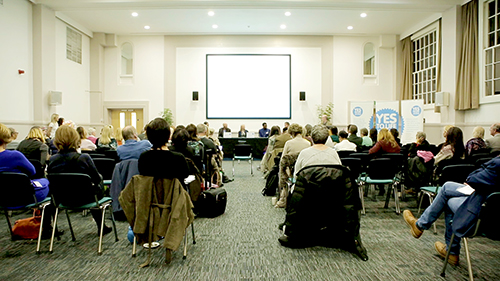
ANH-Intl Sustainable Healthcare campaign
ANH-Intl Health Choice campaign




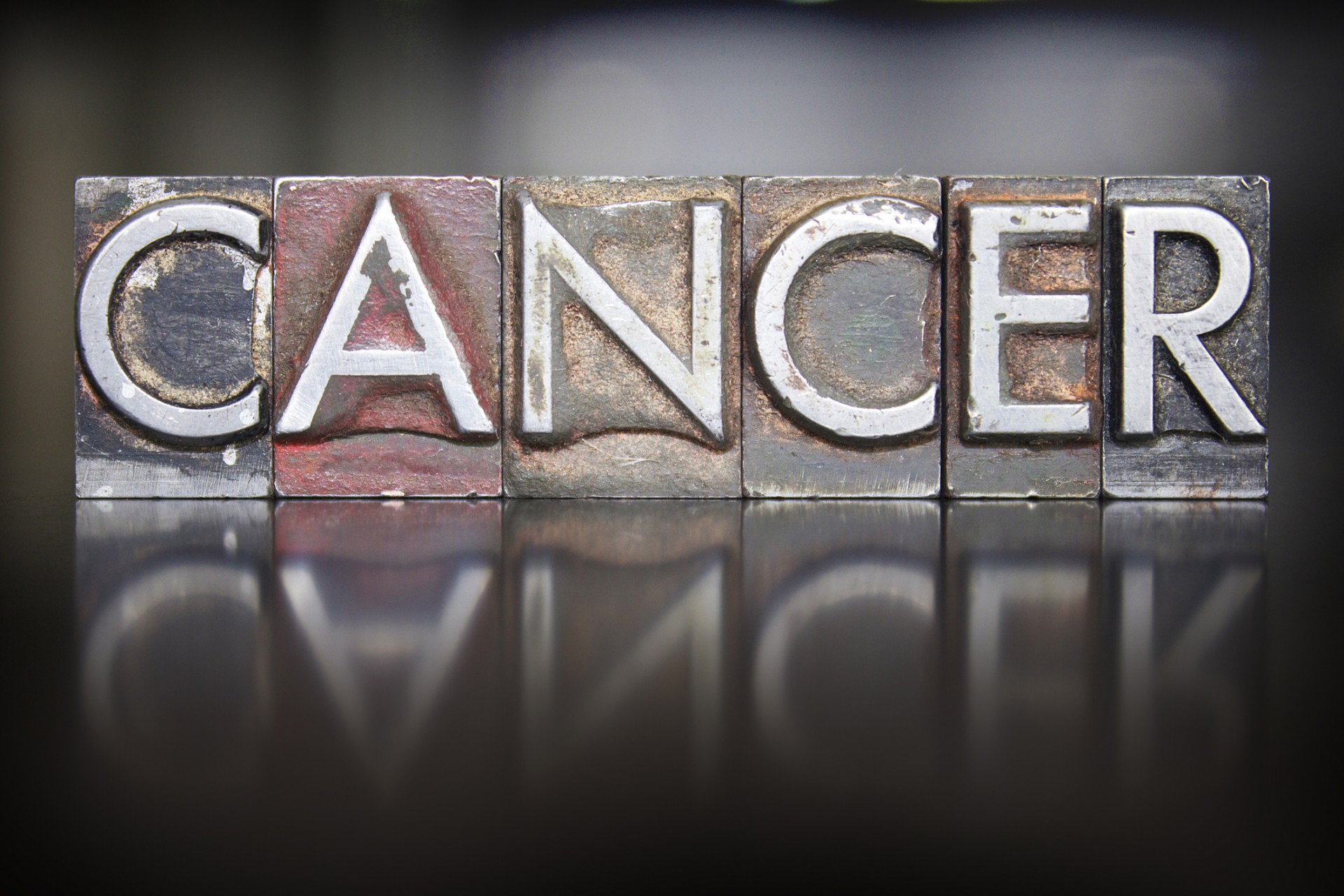



Comments
your voice counts
24 November 2016 at 8:38 am
Back to Basics but no Single Cause.
Cancer or in fact the epidemic of most diseases (so-called) cannot be solved until we agree that all 'high' sugar foods are toxic. 'High' is anything higher than the amount of sugar (glucose) delivered from consuming a portion of broccoli or avocado or cherry as examples. Foods are defined as that which you can pick and eat without processing. Everything else that needs processing needs a different label to the degree it becomes 'unnatural'. Toxic food is the ultimate label.
Additionally, critical minerals missing from the diet such as selenium and iodine and others contribute to this epidemic.
Poor respiration from stressful living, sedentary lifestyle (sitting too much), chemical air pollution and lack of deciduous trees to extract higher levels of oxygen from Co2 contributes to poor cell health as shown by Warburg.
Happy (Sugar Free) Holidays!
Robert Redfern
27 April 2022 at 6:59 pm
How about FRUCTOSE contained in high fructose corn syrup?
26 November 2016 at 9:46 am
What an excellent summary of an inspiring, memorable day. Thank you.
28 November 2016 at 11:44 am
Thank you for your kind words Wendy.
27 November 2016 at 11:13 am
Hamer's approach to illness - excluding toxicology - was violently squelched - as a basic sense of psychic shocks operating as biological condition - which show correlations between organs involved and the nature of the shock.
"Jane was first diagnosed with cervical cancer in 1994 following a series of misdiagnoses".
Such misdiagnosis are a severe shock to the desire FOR motherhood.
" Due to her misdiagnosis the cancer had spread to her womb ..."
"After her first battle with cancer Jane’s mother was diagnosed with breast cancer"
Shock of fear for the survival of a child.
"... shortly after her mother’s death she discovered the cancer had now metastasised to her lung."
Fear/shock of one's own death...
"This time, she was more prepared to deal with it having already made changes to her diet and started reading about alternatives to standard cancer treatments."
More prepared = less 'nocebo' - more emotional integration and support in allowing the clearing of the reaction to effect the physical restoration of health alongside a psychic-emotional and physical responsibility.
The corruption of Science was in its first efforts to define or rule Consciousness OUT of any CAUSALITY for 'external' events seen as the basis or justification for the use of consciousness as , 'definer' predictor and control-manipulator OF a 'merely mechanical system' as a supposedly mechanical or rational justification for claiming POWER over the reality NARRATIVE - so as to become the 'priesthood' of an elite mercantile class whose subversion and investment in such models gives rise to a managed society of diminishing consciousness - not merely in 'rational terms' but as the creative force of vitality, intuition and imagination - that operates innate integrative meaning, rather than a segregative sense of power in self-justifications seeking validation through power struggles of narrative identities.
Unwillingness to question or release one's own identity-investments - operates a tyrannous or coercive evasion of genuine communication - as fearful conditioning - fully believed and defended or protected against communication.
Apart from the life-shock or trauma that triggers deeper human conditionings - we carry a backlog of traumatic 'effect' in all 'levels' of a body-mind that is in its true nature at one with its activating Spirit - which is our Purpose or Movement of being - through the focus of our current definitions - operating as the 'matrix' of accepted and experience reality - and therefore as like a programmed 'condition' instead of a re-programmable conditioning.
For many, fears rising from the expansion of accepted self or reality definitions - outweigh fears of limited loss in sickness and even death - for an UNCONSCIOUSNESS of terror runs as one of the most primary psychological survival defences.
Facing fear - and transmuting or making conscious relationship - re-integrates the mind rather than fragmenting it under a sense of 'external control' to which it then sacrifices itself as if separateness is personal salvation from OVERWHELM.
But it is the attempt to manipulate-control or coerce that rebounds as a conflicted experience in which a sense of disconnected and polarised exclusivity usurps an intimate or truly shared communication within a quality of being that is not coercive upon its parts and therefore not fragmenting of wholeness as a rich diversity of experience whose core content is wholeness in expression and embodiment - rather than all the kings men attempting to put Humpty together again.
Thankyou for the receptive of a text comment box - and of course to your willingness to listen
27 April 2022 at 6:56 pm
Interestingly, a study of women diagnosed with breast cancer discovered in tissue samples a far higher level of chlorine related toxins in their breast tissue compared to women who were free of breast cancer. Unfortunately the majority of folks continue to consume chlorinated tap water - complete with drug residues, heavy metals and other unhealthy junk.
Take Home:
We are all unique - something many GP's/MD's cannot accept (i.e. one drug/one size fits all). It is true that some people can smoke up to 30 cigarettes a day and live happily into their 90's. So some might argue that smoking is 'safe'. And as we know, that was the general consensus many years ago.
28 April 2022 at 8:01 am
It's so interesting what you say about the differences between people and smoking. My Uncle has recently died at the ripe old age of 90. He smoked since his late teens (always roll ups) and drank like a fish. He was only on one medication until a few weeks before he passed. By all reckonings he should've died a long time ago!
Warm wishes
Melissa
Your voice counts
We welcome your comments and are very interested in your point of view, but we ask that you keep them relevant to the article, that they be civil and without commercial links. All comments are moderated prior to being published. We reserve the right to edit or not publish comments that we consider abusive or offensive.
There is extra content here from a third party provider. You will be unable to see this content unless you agree to allow Content Cookies. Cookie Preferences